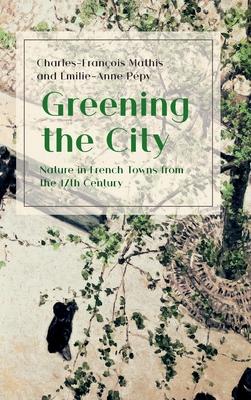The time seems ripe for the greening of cities: green roofs and walls, planted pavements, shared or therapeutic gardens... Is the city discovering its vegetable nature?
Exploring the place of nature in the French urban environment from the seventeenth to the twenty-first century, this volume, translated from the original French by Moya Jones, reveals, rather than a monolithic narrative, a continuous, but fluctuating, interlacing of paving stones and plants. The focus of this liberally-illustrated book is not just gardens and parks, but also all the plants and plant matter that circulate in the space of the city - vegetable waste, market fruits and vegetables, cut flowers, etc. These various forms give a new inflection to the history of cities, taking us on a voyage back to their natural roots.
We trace why the presence of certain aspects of nature in an urban environment has been accepted, sometimes encouraged; what actors have allowed it to take root and flourish; and what challenges have been faced along the way. In examining the vegetal nature of the city at the crossroads of social, economic, cultural and political history, green spaces and plants reveal themselves as instruments of urbanity or disorder; agents of stage setting, schooling and subsistence; objects of commerce, entertainment, scientific study, wellbeing or good living. From the gardens of the aristocracy of the Grand Sicle to the market of the Halles in Paris, from the parks of the Second Empire to botanical gardens, a whole new history is unveiled and throws the light of the past over our own time.
